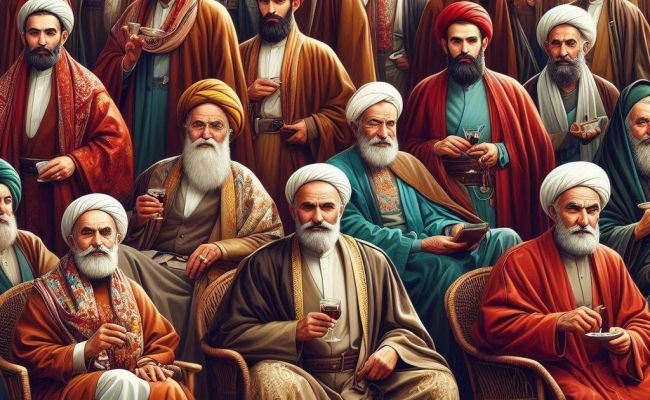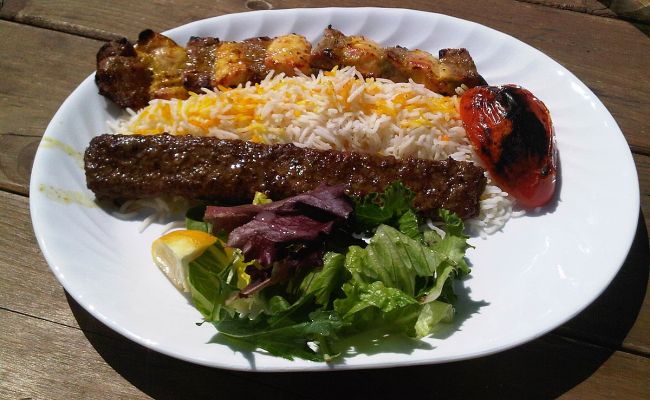Iran is a mountainous, arid, and ethnically diverse country in
southwestern Asia. The country has a long and distinct cultural and
social history dating back to the Achaemenian period, which began
around 550 BCE. Since 1979, it has gained recognition for its distinct
Islamic Republic brand.
Culture in Ancient and Old Iran
Few countries have such a rich cultural past as Iran, and few people are
as aware of and outspoken about their deep cultural traditions as
Iranians. Iran’s culture combines old pre-Islamic and Islamic influences.
Iranian culture has long been the dominant culture of the Middle East
and Central Asia, with Persian regarded as the language of intellectuals
throughout much of the second millennium and the language of
religion and the public before that.
Iran, or Persia, as a historical entity, dates back to the Achaemenids
(about 2,500 years), and despite political, religious, and historical
changes, Iranians maintain a strong connection to their heritage.
Modern Iran is heavily influenced by Shiʿi Islam, but the country’s art,
literature and architecture reflect its rich national past and the
a premodern literary culture that spanned the Middle East and South
Asia. Iran’s modern history can be traced to the intrinsic tension that
existed between the Shiʿi religiosity pushed by Iran’s clergy and the
Persian cultural inheritance, in which religion played a subordinate role,
as professed by the Pahlavi monarchy.
Despite the predominance of Persian culture, Iran is still a multiethnic
state, with Armenian, Azerbaijani, Kurdish, and smaller ethnic
minorities each having their own literary and historical traditions that
date back centuries, even to the pre-Christian era for the Armenians.
These groups usually maintain close ties to the wider cultural life of
their relatives outside Iran.
Iran People
Iran is a diverse country, with people of all religions and ethnic
backgrounds united by Persian culture. The majority of the population
speaks Persian, which is also the country’s official language, as well as
other Iranian languages or dialects spoken in some parts of Iran,
including Azeri, Kurdish, and Arabic.
The Twelver Shia branch of Islam, the official state religion and the
religion of 90% to 95% of Iranians, dominates Iranian religion. Around
4% to 8% of Iranians, primarily Kurds and Balochis, practice Sunni
Islam. Zoroastrians, Jews, and Christians are all non-Muslim religious
minorities existing in Iran.

Ethnicity and regional diversity of Iran people
Iran rich cultural past and diverse ethnic mix result in a distinct and
lively society. Persians make up the vast majority of Iran’s people, speak
Farsi, and have had a substantial impact on the country’s cultural and
intellectual landscape.
The second-largest ethnic group, Azerbaijanis, live primarily in the
northwest and speak a Turkic language, making significant contributions
to the country’s cultural and economic fabric. Kurds, who live mostly in
the western mountains, have long desired regional sovereignty and
maintained a distinct cultural identity. The western areas recognize Lurs
and Bakhtiaris, semi-nomadic communities, for their traditional
agricultural and animal herding practices.
The Baloch people live in southeastern Iran, speak Balochi, and follow
Sunni Islam. In the southwest, the Arab minority is preserving its
cultural and linguistic legacy. Smaller communities such as Armenians,
Assyrians, Jews, and Brahuis also contribute to the country’s diverse
ethnic fabric, each with its traditions and dialects. This patchwork
of nationalities and regional identities contributes greatly to Iran’s social
and cultural fabric, making it a truly varied country.
Iran Language
Iran has a complex linguistic landscape, with Persian
(Farsi) serving as the official and most widely spoken
language in government, education, and the media. Other
prominent languages are Azerbaijani (Azeri) in the
northwest, Kurdish in the west, Luri in the western regions,
and Balochi in the southeast.
Arabic is spoken in the southwest, whereas Turkmen is
utilized in the northeast. Minority communities in Iran also
speak Armenian, Assyrian, and Hebrew, reflecting the
country’s diverse cultural and ethnic heritage.
Religion In Iran
Islam is important to Iran’s societal fabric, impacting its
culture, governance, and daily life. The Safavid dynasty
declared Twelver Shia Islam the state religion in the 16th
century and the majority of Iranians practice it. This faith
shapes Iran’s customs, festivals, and ethical principles,
which permeate both the private and public arenas.
Along with Shia Islam, there is a small Sunni Muslim
minority, particularly in the western and southeastern
districts. Religious diversity strengthens Iran’s cultural
fabric, generating a sense of spirituality and camaraderie
among its citizens.
Cuisine Of Iran
Iranian cuisine, or Persian cuisine, refers to Iran’s food
traditions. Iran’s culinary culture has traditionally affected
adjacent regions cuisines, such as Caucasian, Turkish,
Levantine, Greek, Central Asian, and Russian. Different
Persianized Muslim sultanates and the Central Asian

Mughal dynasty influenced Indian and Pakistani cuisines,
which in turn influenced Iranian food.
Typical Iranian main courses include rice, meat, veggies,
and nuts. Iranians frequently use herbs and fruits like
plums, pomegranates, quince, prunes, apricots, and
raisins. Iranians commonly combine and utilize saffron,
dried lime, and other sour flavorings, along with cinnamon,
turmeric, and parsley, in a variety of recipes.
Iranian cuisine is particularly prevalent in the Iranian diaspora
cities outside of Iran, including London, the San Francisco
Bay Area, Toronto, Houston, and, most notably, Los Angeles
and its surroundings.
